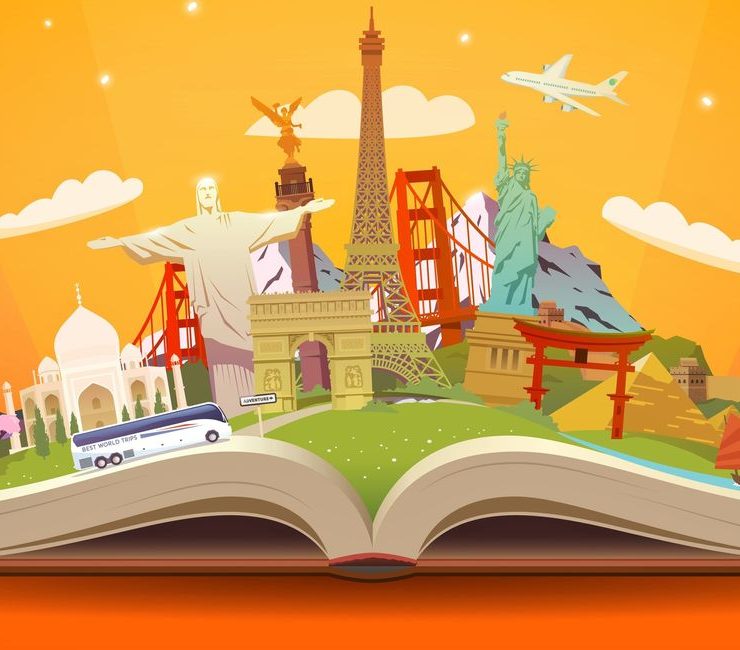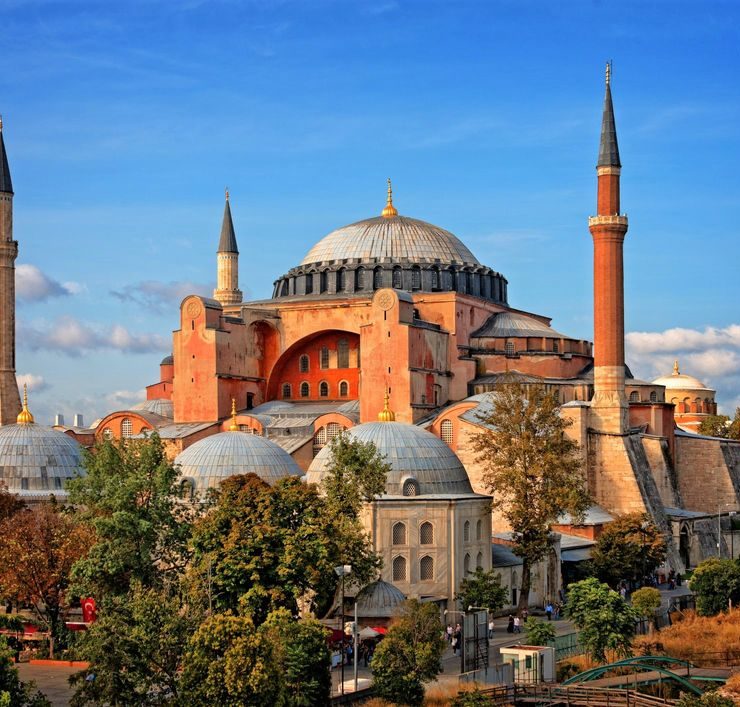Luxury products are often associated with items of superior quality or scarcity, but all too often come at a cost much higher than their monastery value. Due to the amount of profit that can be made from luxury products many unscrupulous companies make use of less than ethical practices to get these products on the market. Of course not all luxury products are unethical, but since it is extremely difficult to determine the origins of certain items or components there is always a risk they come at a higher cost than you may know.
1. Chocolate
The main ingredient in chocolate is cocoa, which is mostly supplied by Western African countries such as the Ivory Coast and Ghana. Unfortunately, child labor and even slavery have been uncovered on some cocoa farms. In some cases children as young as 5 have been found laboring on cocoa farms, but most children used for the work tend to be between 12 and 16. Children work with dangerous knives and tools and have to carry heavy bags. In Ghana young children are also reported to spray toxins without wearing protective clothing in order to protect the cocoa against insects.
2. Diamonds
The Hollywood film, “Blood Diamond”, shined a spotlight on the issue of diamonds that are mined in war zones and sold to finance the conflict. These diamonds originate predominantly from war-torn areas in western and central Africa, accounting for up to 4% of the diamond production in the world during the late 90s. Although the flow of blood diamonds has been reduced and an international certification scheme set into place to regulate rough diamond trade, bribery and corruption make it difficult to monitor. The certification scheme also doesn’t address the issues of forced labor, child labor and horrible working conditions still plaguing the industry.
3. Seafood
Seafood sounds like an unlikely source of slavery, but it does happen. One investigation found people from Burma who were brought to Indonesia and forced to catch fish. These slaves were said to have been forced to work shifts of up to 20 hours and severely beaten if they tried to rest or even complain. According to some of the former slaves a lot of their fellow workers died at sea. The fish caught by the slaves are shipped to Thailand from where it enters the global commerce stream and end up at anywhere from fine dining restaurants to major grocery chains in America. Threats from some countries to ban the import on Thai seafood has led to the closure of trafficking camps, but according to reports the slaves were simply relocated to off-shore cargo ships where they continue to work.
4. Tobacco
After a report by Human Rights Watch, it was revealed that children, some as young as only 7 years old, were working on tobacco farms. The children, often working alongside their parents exhibited symptoms of nicotine poisoning, such as dizziness, vomiting and nausea. Even more shocking is that the practice is completely legal under federal labor laws, provided the parents’ consent and that it took place in the US states of Kentucky, North-Carolina, Virginia and Tennessee. In the wake of the outrage some members of the tobacco industry started to prohibit the employing of children under 16, but 16- and 17-year olds are still allowed to work in tobacco fields.
5. Extra Soft Toilet Paper
In contrast to Latin America and Europe where up to 40% of toilet paper is made from recycled products, American consumers have a taste for luxurious ultra soft toilet paper. According to a scientist at the Natural Resource Defense Council, more than 98% of toilet rolls that are sold in America are made from virgin wood. The result is that an estimated 15 million trees are destroyed to provide the American market with toilet paper each year. Most of these are made from old growth trees, one of the key absorbers of carbon dioxide. In fact, some of the pulp for toilet paper come from the virgin North American forest, an irreplaceable habitat for numerous endangered species.
6. Electronics
From smartphones and tablets to laptops and other gadgets the demand for electronic devices continues to grow. However, major tech companies, such as Apple, have been battling for years to combat labor violations and unsavory labor practices in their factories. In addition, many electronic devices are dependent on coltan, which is a combination of columbite and tantalum. The problem is that these resources are mined in the Democratic Republic of Congo, often by enslaved children who are not provided with any safety protection. The raw materials mined under these inhumane conditions are then sent to China, where they are processed in factories that, according to some reports, are little more than labor camps. Suicides occurred so regularly at some of these factories that employees were forced to sign agreements that stated their employers are exempt from lawsuits from family members in the event of suicides.
7. Silk
According to a report by the United States Department of Labor, silk is still one of the commodities that are produced by child labor, most notably in countries such as India. For years, young children were exploited to work in the manufacturing of silk fabrics and silk threads because of the belief that their small hands were more suitable for the job. Children as young as 6 or 8 had to stand on their feet for up to 14 hours a day amidst ear-splitting noise while working with dangerous machinery. For many it was a case of bonded child labor as their parents were already paid an advance sum of money for the work of the children. The amount of child laborers employed in the Indian silk industry has dwindled in recent years, but still occurs in some places.
8. Designer Fashion
While it is often the lower cost garment suppliers that thought to engage in sweatshop practices for production this does not mean that designer labels are exempt. Luxury clothing often have a reputation that are based on the high quality of their crafted items, but due to cost cutting measures this is not always the case. When garment manufacturing is outsourced to poorer countries, workers are often subjected to unsafe and unsanitary conditions with very little compensation. In addition, many of the fabrics used by the major fashion brands are actually made from dissolving pulp. This is wood pulp that is combined with toxic chemicals and often come at the cost of forest loss.
9. Gold
In addition to the often hazardous conditions in which gold is mined it also comes at a cost to the environment. Open-pit gold mining in particular can destroy the landscape and destroy ecosystems. This is especially worrying as about a quarter of the active mines globally are situated close to parks or other protected natural areas. Studies have found that a single gold ring can leave up to 20 tons of mine waste in its wake while a large gold mine can use close to 2000 tons of cyanide on a yearly basis. To put that into perspective, even a dose of cyanide the size of a rice grain can be fatal to humans, let alone fish or animals.
10. Pearls
Pearls are prized for being rare and valuable, which makes them very recognizable luxury items. However, since natural pearls are extremely rare, the majority of pearls on the market are farmed, often at a cost to the environment. For example, in China the pearls are cultivated from freshwater mussels where old rice paddies are flooded after excavation. The ponds are then enriched with manure or animal waste in order to produce the algae that serve as a food source for the mussels. Unfortunately, the soil and waters can become nutrient impoverished due to this process.
11. Perfumes
Many luxury perfumes already come at a high monetary cost, but often there is another price to pay as well. Despite a growing number of animal-friendly fragrances on the market, there are still some brands that condone the practice of animal testing. Not only are the animals kept in cramped living conditions, but are also subjected to very painful tests. For example, in order to test the toxicity of a product the substance is often pumped into the stomach or airways of an animal. Just because a perfume has not been tested on an animal doesn’t mean it is cruelty-free either. Some products include ingredients that are animal-derived, which is often harvested in painful ways.
12. Rubies
Rubies from Myanmar, formerly known as Burma, are amongst the most coveted in the world, selling for more per carat than any other gem in the world. However, due to the slave labor conditions in which these gems are mined in Myanmar, countries such as the United States imposed sanctions against the import of rubies and other gems like jadeite. However, this doesn’t prevent rubies from being smuggled across the border into China from where they make their way on to the global market.
13 Cosmetics
Just like perfumes, the cosmetics industry has long been haunted by reports of animal testing. However, in addition to cruelty to animals there is another high price to pay for some brands. The popularity of mineral cosmetics surged after some media reports highlighted links between cosmetic makeup and certain illnesses. However, despite being a more natural beauty alternative, these products often contain a mineral called mica. The main source for the glittery substance is India, where child labor is often used for the mining. According to some reports, children as young as 5 years old are sent into crumbling mine shafts to chisel away with hammers. It is illegal for children under 14 to work in the mining industry in India, but sadly it still happens. Since companies rely on the assurance of their distributors that their supply of mica is not the product of child labor it is very difficult to assess whether these claims are true or not.
14. Shahtoosh
Shahtoosh shawls are incredibly soft, extremely delicate and also very illegal in most places. However, this hasn’t prevented these shawls, woven with Tibetan antelope down hair, from being very sought after and fetching high prices from western buyers. Sales of the shawls are banned in many countries due to an international convention on the trade of wildlife products, but high demand still fuels the trade of these luxury items. Although the down was traditionally collected by farmers during the summer months when the chiru moulted, high demand caused widespread killing of the animals. The result is that the number of chiru has dwindled to the point where they have been classed as an endangered species.
15. Leather
Leather is often seen as a byproduct of the meat industry, but in reality it is a co-product, especially in the case of ostriches, crocodiles and snakes. This means that more cattle are required to fuel the demand and this often results in cruelty. According to some animal rights watch groups, cows are often confined to tiny stalls where they are either force-fed fillers or underfed. There have also been reports of cows getting skinned while the animals are conscious. There are also serious environmental consequences as seen in the case of Brazil. This country is the largest exporter of unfinished leather to China, but more than 40% of their cattle graze live and graze on grounds that was part of the Amazon rain forest. During the process of removing the hair, tanning, trying, softening and recoloring the animal hide a lot of chromium and water is also used, which can end up in the ground water, turning it toxic.
16. Coffee
Coffee is one of the largest traded food commodities in the world, but due to lack of regulations in some producing countries often end up treated with very powerful chemicals. This causes harm to not only the environment, but also the farmworkers. In many places coffee is also processed by workers in bleak conditions. These concerns have given rise to programs, such as fair trade and certified organic, but these also come with their own problems. For example, studies have found that fair-trade business can actually cause decimation against poor coffee farmers who cannot pay high certification fees. In many cases their products are organic as they lack the funds for pesticides or fertilizers, but since they cannot pay the certification fees they miss out on the premium prices that certified coffee fetches. In addition, the certification process is very difficult to police, which makes it hard to determine if some so called ethical coffees really are produced ethically.
17. Soap
Studies have found that about 17% of children aged 10 to 14-year old in the Bangladesh capital of Dhaka engage in child labor. Many of the children in this age group have never been to school either and work as manual labors at soap factories. Due to poverty, many families force their children to work in the hazardous and polluted environments of these factories. As they are forced to work long hours and in very poor conditions the children are often affected both mentally and physically while their payment is much less than that of adults.
18. Oil & Gas
Oil and gas are a valuable commodity and is often associated with the appropriation of land along with the forced relocation of the original inhabitants. Studies have also found that countries that depend on the export of these natural resources often have a higher risk of civil war due factions vying for control. Environmental devastation that stems from the mining and transporting of oil is not uncommon either. There are even cases of human rights abuses, such as one major company that allegedly used forced labor for the construction of their pipelines.
19. Abalone
Abalone, which is a type of sea snail, is a very desirable delicacy in some cultures, but this has led to the threat of extinction due to overfishing. Due to their high price and sought after nature, Abalone has also become the target of widespread poaching. Research has found that a large number of abalone arriving in Hong Kong markets are exported from countries such as Lesotho or Swaziland, that have no abalone stocks or fisheries of their own. These abalone then enters the legal supply, despite the fact that they were smuggled from South Africa to these land-locked African countries. Furthermore, international crime syndicates have also been known to trade illegal drugs with communities in exchange for abalone, causing social issues.
20. Blockbuster Movies
With the large scale destruction of buildings and vehicles Hollywood has a reputation for excess, but sometimes the environment pays a toll as well. One of the most famous examples is the Maya Beach on Phi Phi Leh Island in Thailand that was destroyed during the filming of the Hollywood movie, “The Beach.” Then there is “Apocalypse Now”, where acres of jungle were set ablaze for background shots. More recently, during the filming of the blockbuster movie, “The Expendables 2”, endangered bats were killed in Bulgaria. Despite promises by the producers to not intrude on the 15 species of protected bats roosting in a cave where filming took place, the bats were subjected to stress, loud noise, bright projector lights and other disturbances that kept them awake during hibernation.
When On Earth Magazine is for people who love travel. We provide informative travel guides, tips, ideas and advice regarding places to see, things to do, what to taste, and much more for world travelers seeking their next dream vacation destination.





